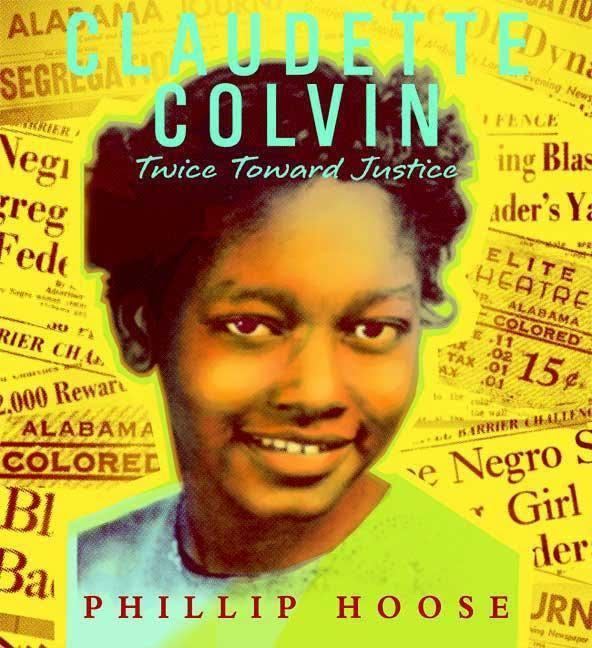8 /10 1 Votes8
Language English Pages 144 Originally published 20 January 2009 Genre Children's literature | 4/5 Goodreads ISBN 978-0-374-31322-7 Page count 144 | |||||||||||||||||||||||||||||||||
 | ||||||||||||||||||||||||||||||||||
Similar Phillip Hoose books, John Newbery Medal winners, Children's literature | ||||||||||||||||||||||||||||||||||
Claudette colvin twice toward justice
Claudette Colvin: Twice Toward Justice is a 2009 young adult nonfiction book by Phillip Hoose, recounting the experiences of Claudette Colvin in Montgomery, Alabama during the African-American Civil Rights Movement (1955–1968).
Contents
Plot
Claudette Colvin: Twice toward Justice is the story of the early life of Claudette Colvin, a fifteen-year-old resident of Montgomery in 1955 who spontaneously refused to yield her seat to a white woman, which violated local law at the time. The importance of Claudette Colvin is that her actions preceded that of Rosa Parks's by nine months. Parks became a symbol of the Civil Rights Movement in the 1960s and Claudette's story was almost unknown, despite her importance in inspiring the Montgomery bus boycott and her participation in the Browder v. Gayle trial which declared Montgomery bus segregation laws unconstitutional.
The main point of the book is to tell Colvin's story and to subtly hold the '50s and '60s Civil Rights' leaders accountable for ignoring her. At the time, she was considered an inappropriate face for the Civil Rights Movement as she was a young, "emotional" unwed, pregnant mother. Given the stigma on unwed motherhood in the black community and behind, she was deemed unfit. Colvin was then almost completely forgotten by the movement even long after its major successes. When she was young few helped her survive poverty or take care of her child. She was given almost no acknowledgment for her groundbreaking actions. While some people looked into her life history and its role in the Montgomery bus boycott in the '70s, '80s and '90s, Colvin was not widely recognized until the mid-2000s. In 2005, she spoke for the first time to Booker T. Washington high school students.
Colvin was born in 1939 to young parents but was left to be raised by her great-aunt and great-uncle. She lived in a small town outside of Montgomery. She was regarded as a smart and inquisitive young girl and started to resent segregation from an early age. In high school, Colvin started to learn about black history and became resentful that her constitutional right to equal protection under the law was being violated. This anger precipitated her resisting giving up her seat to a white woman. Her actions earned her many friends and enemies and inspired the black community. Had it not been for her, the energy that sparked the Montgomery bus boycott may not have existed and with it much of the energy that set off the Civil Rights movement.
The book has two major climax points, Colvin's resistance on the Montgomery bus and her testimony in Browder v. Gale. The birth of the Civil Rights Movement is also a major feature of the story, but its rise and trials did not directly correlate with Colvin's. Eventually, the movement and its well-known historical record effectively forgot her, and she served quietly as a nurse for decades until she was rediscovered. The book covers her life in less than two hundred pages, and is clearly intended for younger high school students interested in learning about the true origins of the Civil Rights Movement.
Critical Reception
Claudette Colvin: Twice Toward Justice gained generally positive reviews from critics. They praised the young adult biography for giving Colvin the cognition she never received back in 1955. The Wall Street Journal said "History might have forgotten Claudette Colvin, or relegated her to footnote status, had writer Phillip Hoose not stumbled upon her name in the course of other research and tracked her down." And the Chicago Tribune says, “Hoose makes the moments in Montgomery come alive, whether it’s about Claudette’s neighborhood, her attorneys, her pastor or all the different individuals in the civil rights movement who paths she crossed . . . . An engrossing read.”
